Here you will find everything you need to know about hydrangeas in winter: from the right frost protection to successfully overwintering in a pot.

hydrangeas (Hydrangea) and frost: Hydrangeas don't really have a problem with the cold, rather picturesque ice formations form on the frozen blossoms every year. But even if hydrangeas are hardy, they can easily suffer frost damage if they are not cared for properly. We explain exactly how to make hydrangeas winter-proof and how to overwinter hydrangeas in tubs without any problems.
contents
- Overwintering Hydrangeas: Are All Hydrangeas Hardy?
- Winterize hydrangeas
- Overwinter hydrangeas in pots
- Caring for hydrangeas in winter
Overwintering Hydrangeas: Are All Hydrangeas Hardy?
Although hydrangeas tolerate frost relatively well, it can just about Hydrangea Species, which start their flowers in autumn for the following year, become a threat. Because the flowering plants are sensitive to frost and also have very shallow roots. So if you want to protect hydrangeas from frost, it is worth covering the roots with a layer of mulch or something similar to protect against ground frost.
Another critical point in time is the new shoot. This takes place around the month of April, at which time severe night frosts can still threaten. If the tender, young shoots of the hydrangea experience night frosts, the entire new shoot can suffer severe frost damage - up to complete destruction. This damage is usually accompanied by the loss of the hydrangea flower. This is especially true for the species Hydrangea macrophylla – but with the right preparation, you can too peasant hydrangea hibernate safely.
Winterize hydrangeas
For a successful overwintering of your hydrangeas, you should already pay attention to the suitable location when planting. You can also ensure good frost protection with the procedure for fertilizing. To specifically protect the hydrangeas, you can use jute and fleece as well as foliage.
If you are planning to bring your hydrangea into the apartment for the winter, you can only advise against it: Hydrangeas need frost, or at least cold, to enter the important dormant period and prosper in the coming year to bloom.

Winterizing hydrangeas: At a glance
- Plant in a sheltered spot.
- Fertilizing with mineral nitrogen is taboo from mid-July; organic fertilizers can be used until the end of July; a high potassium content in the fertilizer ensures frost tolerance - so it is best to use a special fertilizer for hydrangeas such as our potassium-rich one Plantura organic hydrangea fertilizer.
- Protect hydrangeas from frost with leaves, a burlap sack, fir branches or mulch; not only cover the hydrangeas, but above all the roots.
- Cover peasant and viburnum hydrangeas with leaves or pine branches at ground level.
- With rising temperatures (e.g. from the Ice Saints, 11. to 15. May) remove the winter protection of the hydrangeas so as not to endanger the shoot through fungal attack.
- In the event of severe night frosts during the sprouting in spring, protect the hydrangeas against the frost for a short time - for example wrap them in jute or garden fleece overnight.
- During the winter, the hydrangeas do not need to be watered.
notice: Hydrangeas can be pruned either in autumn or in spring before new growth. More information about Cutting hydrangeas can be found in this special article.
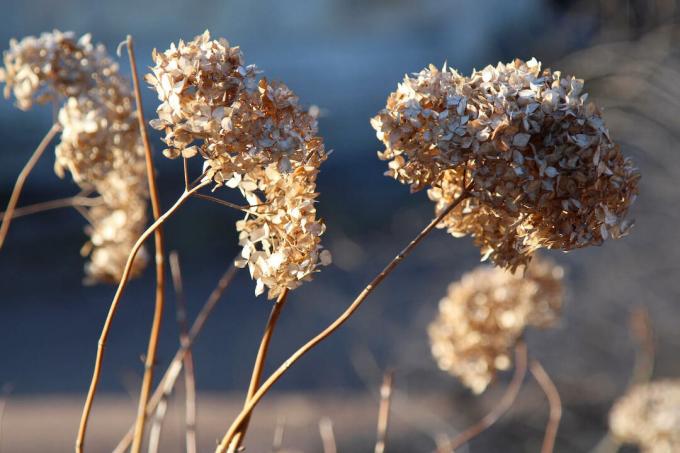
Overwinter hydrangeas in pots
If you want to overwinter hydrangeas in the tub, the same applies as for specimens planted in the bed.
If the goal is to protect hydrangeas in pots from frost but leave them outdoors, it is a good idea to wrap the pot and plant together in jute or garden fleece. To protect the hydrangeas from sunburn on the foliage, it is best to place them in a shady corner. Containers with a diameter of less than 35 centimeters are best overwintered in a shed or garage in a frost-free place (3 - 5 °C).
It is not advisable to overwinter your hydrangea indoors: it should not be warmer than 5 °C, because cool temperatures favor the formation of the ornamental inflorescences.
Incidentally, the same applies to storing hydrangeas in the cellar over the winter: on the one hand, most cellars are too warm for them Plants, on the other hand, it can happen that the hydrangeas are not brought back to light in time in spring will. So you can miss the date for normal budding.
Tip: When buying hydrangeas, pay attention to the condition they are in. Some garden centers still offer fall-blooming plants that are propelled in the greenhouse. If you try to overwinter these hydrangeas, this will inevitably lead to severe frost damage, especially outdoors. Because in order to produce attractive plants, the hydrangeas are often fertilized far too much. Tree nurseries often offer somewhat more expensive, but higher-quality goods and better advice.
Summary: Overwintering hydrangeas in pots
- Wrap the pot and plant in jute or garden fleece.
- Place in a shady corner to protect the hydrangeas from sunburn.
- Overwinter smaller pots (diameter less than 35 cm) frost-free in the shed or in the garage.
- It is better not to overwinter hydrangeas in the apartment or in the basement: temperatures should not be warmer than 5 °C.
Caring for hydrangeas in winter
Are your hydrangeas winterized and in their winter quarters? Then you usually don't have to worry about them until spring. Hydrangeas do not require fertilizer during the winter dormancy period. The water supply can also be suspended in winter. Outdoors it is usually humid enough in the cold season anyway. You can only give them a small sip of water every one to two months if you overwinter your hydrangeas in tubs and the plants are under a roof.
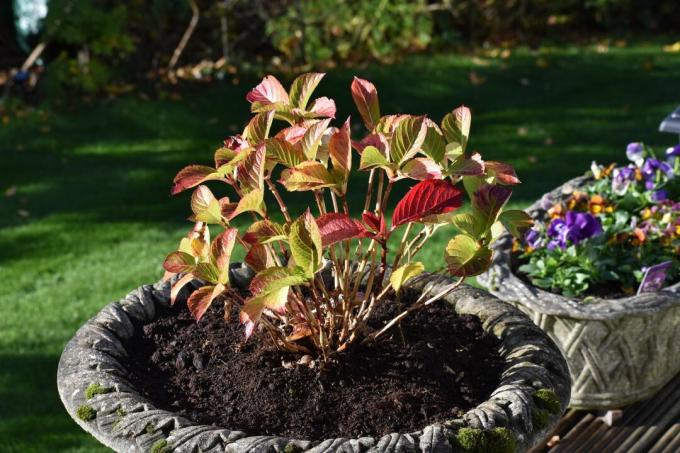
When winter slowly turns into spring, the time has come for spring fertilization. A special hydrangea fertilizer such as ours is suitable for this Plantura organic hydrangea fertilizer. It strengthens your hardy hydrangeas with extra iron and thus prevents typical deficiency symptoms and diseases. This gives the hydrangea plants a good start to the growing season.
Furthermore, after hibernating in a dark place, hydrangeas should be slowly and carefully reaccustomed to the sun, otherwise they may suffer from sunburn.
More information about Hydrangea care in general see our care article.
These products protect your plants from frost:- Thermal garden fleece: Optimal to protect your plants from cold and frost in winter. Can be cut individually.
- Jute sack/blanket: Reliable protection against cold and frost made from 100% jute. Decorative natural fabric with a long service life.
- coconut mat: Excellent thermal retention made of natural fiber. Breathable, weather-resistant and durable.
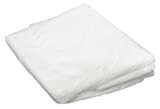
Garden fleece, frost protection, growth-promoting microclimate
4,49€
Details →
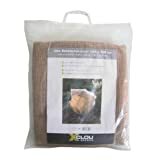
Jute protective fleece made of 100% jute fibers, approx. 105x500cm
11,03€11,01€
Details →
- 30%
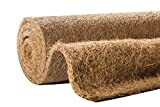
Coconut felt mat, cold protection 0.5 x 1.5 m, brown,
9,99€6,95€
Details →
